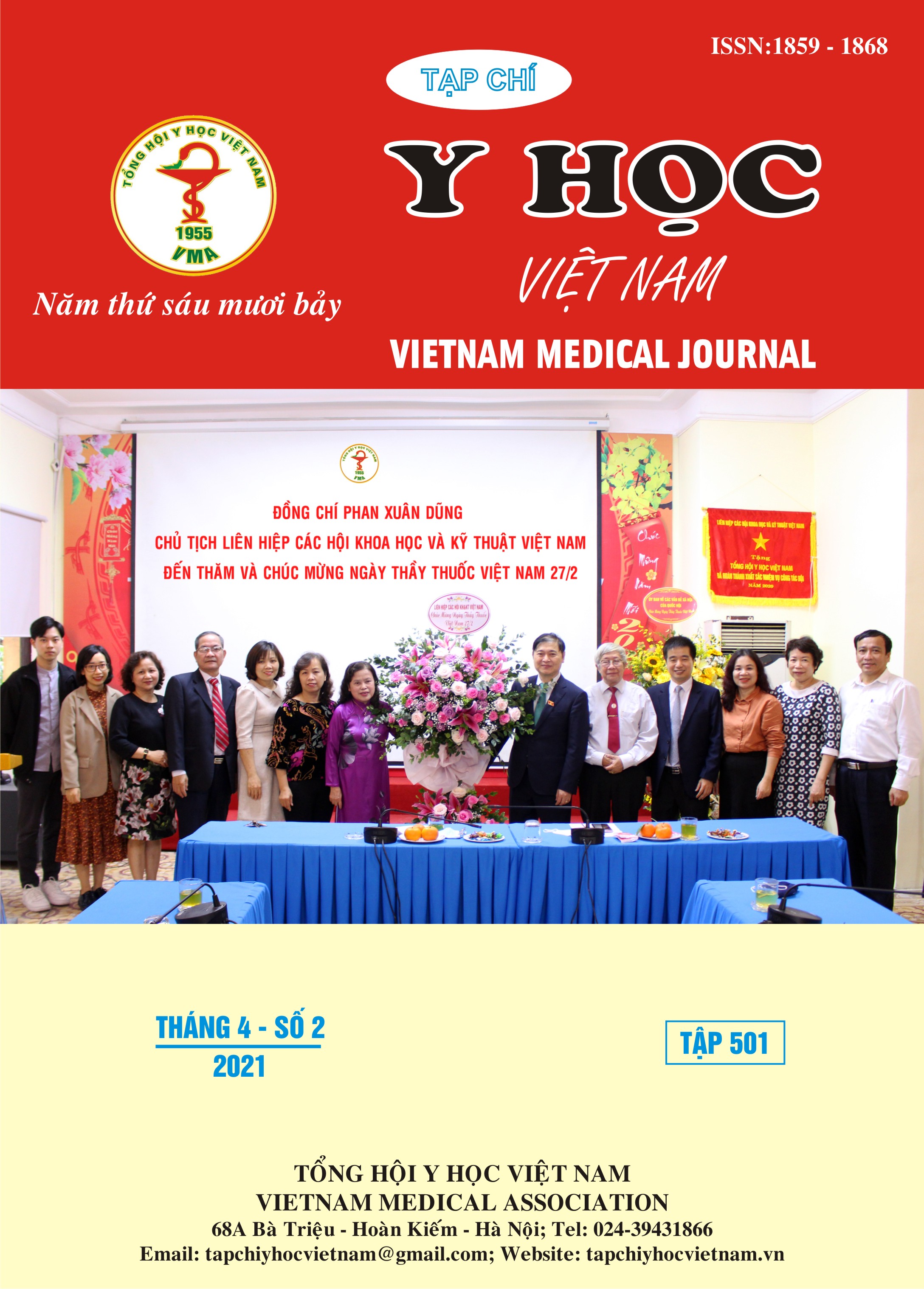EVALUATE THE ANTIMICROBIAL EFFICACY OF 2% CHLORHEXIDINE SOLUTION ON NECROTIC PULP BY REAL – TIME PCR
Main Article Content
Abstract
Objectives: To evaluate clinical antimicrobial efficacy of 2 % CHX solution on human root canals containing necrotic pulp tissue by real-time PCR. Materials and methods:Clinical trial study, evaluate the bacteria amount by real – time PCR on 32 root canals containing necrotic pulp before and after being irrigated with 2% CHX solution. Results:The amount of bacteria remained in root canals after treatment was significantly lower than the initial bacterial load (p<0.001). The amount of baseline bacteria was 1770x103 DU and after treatment was only 16.55x103 DU. Bacteria on the anterior teeth, premolar and molar teeth all decreased significantly after being treated with 2% CHX solution (p<0.05), there was no difference about the remaining bacteria after treatment in three teeth groups (p>0.05). The amount of bacteria in the necrotic pulp with and without exposing pulp chamber both decreased significantly after treatment with 2% CHX solution (p<0.001), the remaining bacteria in the exposing group was higher than the non-exposing group with statistically significant (p<0.05). Conclusion: 2% CHX solution is effective irrigating solution on necrotic pulp, including teeth had exposure and no exposure of pulp chamber.
Article Details
Keywords
Chlorhexidine, hypochlorite sodium, endodontic infection, real – time PCR
References
2. Huỳnh Hữu Thục Hiền (2016), "Vi khuẩn trong nội nha",Cập nhật nha khoa - Tài liệu tham khảo và đào tạo liên tục, Tập 21 - 2016, Nhà xuất bản Y Học Thành phố Hồ Chí Minh.
3. Ertugrul Ercan, Tuncer O¨ zekinci, Fatma Atakul, et al. (2004), "Antibacterial activity of 2% chlorhexidine gluconate and 5.25% sodium hypochlorite in infected root canal: in vivo study",J Endod, 30 (2), pp. 84-87.
4. James L. Gutmann, Bing Fan (2016), "Tooth Morphology, Isolation, and Access",Cohen's Pathways of the pulp, Elsevier, 11th Edition, pp. 120-205.
5. Lucio Souza Gonc¸alves, Renata Costa Val Rodrigues, Carlos Vieira Andrade Junior, et al. (2016), "The Effect of Sodium Hypochlorite and Chlorhexidine as Irrigant Solutions for Root Canal Disinfection: A Systematic Review of Clinical Trials",JOE, 42 (4), pp. 527-532.
6. Markus Haapasalo, Ya Shen (2013), "Evolution of nickel–titanium instruments: from past to future",Endodontic Topics, 29, pp. 3–17.
7. Vianna ME, Horz HP, Gomes BPFA, et al. (2006), "In vivo evaluation of microbial reduction after chemo‐mechanical preparation of human root canals containing necrotic pulp tissue", International endodontic journal, 39 (6), pp. 484-492.
8. Peters L. B., Van Winkelhoff A.J., J. F. Buijs, et al. (2002), "Effects of instrumentation, irrigation and dressing with calcium hydroxide on infection in pulpless teeth with periapical bone lesions", International Endodontic Journal, 35, pp. 13-21.


